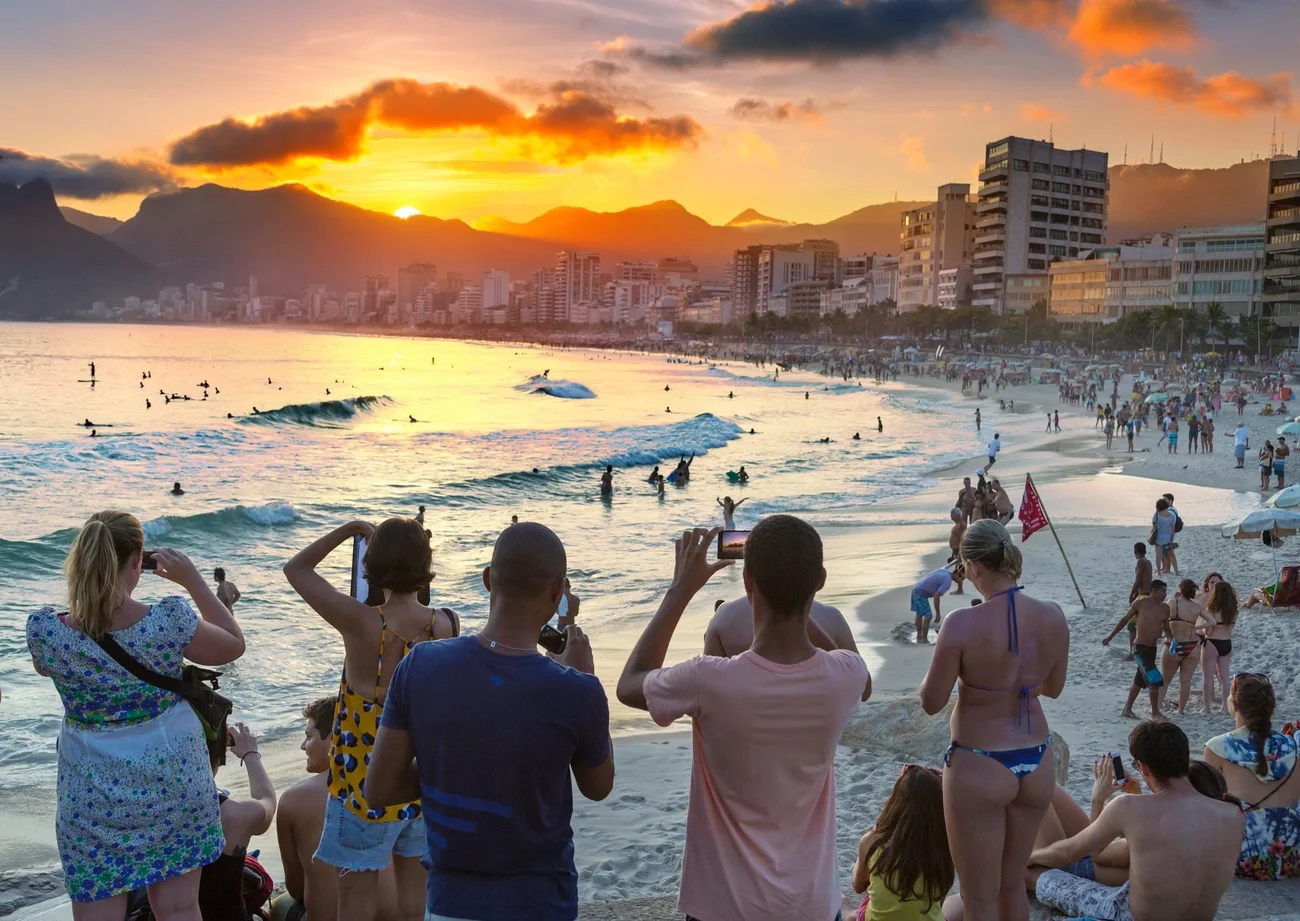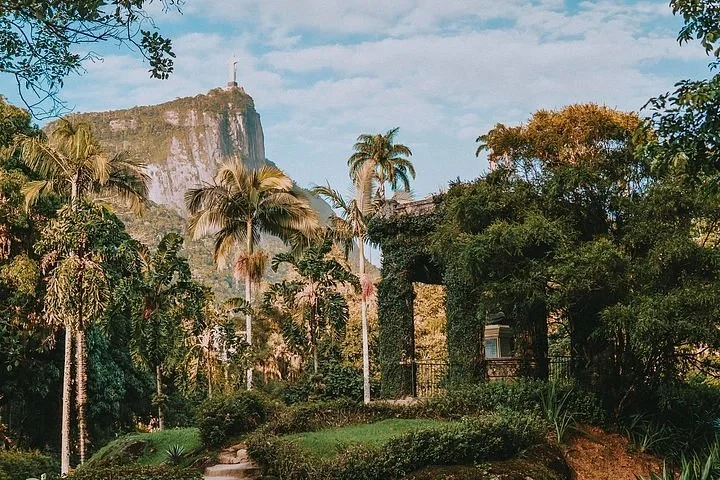Best Time to Visit Rio de Janeiro: A Local's Secret Calendar Guide
Temperatures soaring above 104°F (40°C) during December and January make Rio de Janeiro's summer a truly scorching experience. As someone who's explored the best time to visit Rio de Janeiro across all seasons, I can tell you that timing is everything in this vibrant Brazilian city.
During summer (December through March), Rio transforms into a hub of lively parties and famous celebrations like Carnival, one of the world's largest popular festivities. However, the best time to visit Rio de Janeiro, Brazil depends entirely on what you're looking for. While northern Brazil stays warm year-round, winter months (June to September) offer a cooler, less humid climate with temperatures ranging from a pleasant 18°C to 25°C. In fact, traveling during winter means encountering fewer tourists compared to the peak summer season. Even in winter, Brazil feels pleasantly warm to many European travelers, with daytime temperatures rarely falling below 20°C.
In this local's secret calendar guide, I'll walk you through each season in Rio, helping you decide when to book your trip based on your preferences for weather, crowds, and unique experiences. Whether you crave the energy of summer festivities or the tranquility of off-season exploration, there's a perfect time for your Rio adventure.
Summer in Rio (Dec–Mar): For party lovers and sun seekers
- Image Source: National Geographic
High temperatures and high energy
Summer ignites Rio de Janeiro with electric energy that's impossible to resist. The city sizzles with temperatures reaching up to 31°C (88°F), while humidity soars between 75% and 90%. This tropical combination creates that quintessential Rio atmosphere where the city truly comes alive.
Between December and March, afternoon thunderstorms are common, dumping between 150-180mm of rainfall each month. These brief but intense downpours typically pass quickly, making way for more sunshine. The locals (Cariocas) often take their vacations during this period, adding to the festive atmosphere throughout the city.
Carnival and New Year's Eve highlights
Summer hosts Rio's two most spectacular celebrations. The world-famous Carnival transforms the city into the planet's biggest party, with samba school parades at the Sambadrome being the crown jewel of the celebration. The Special Group performances represent the elite schools competing with the most exciting sambas. Beyond the Sambadrome, over 300 street parties called "blocos" take place throughout the city, creating a truly immersive celebration.
New Year's Eve (Reveillon) brings approximately 3 million white-clad people to Copacabana Beach. The celebration blends traditional Macumba rituals honoring Iemanjá (Goddess of the Sea) with spectacular midnight fireworks displays. After midnight, the beach transforms into an enormous dance floor as the year's first samba strikes up.
What to pack for the heat and rain
For Rio's summer, pack primarily lightweight, breathable clothing made from cotton or linen. Multiple swimsuits are essential as you'll likely hit the beach frequently. A compact, foldable rain poncho will save you during sudden downpours.
Sun protection is non-negotiable – the tropical sun is surprisingly intense. Pack high-SPF sunscreen, UV-protective sunglasses, and a wide-brimmed hat. For footwear, bring comfortable walking sandals for exploring, plus flip-flops for beach days.
Best beaches to visit during summer
Copacabana's 2.5-mile golden crescent is the classic choice, offering a lively atmosphere with beach volleyball, Bossa Nova music, and endless people-watching. For a more sophisticated vibe, head to Ipanema Beach, where sunset at Arpoador Rock delivers one of the world's most spectacular views.
To escape crowds, venture further to Barra da Tijuca, Rio's longest beach at 11 miles, offering excellent conditions for kitesurfing and windsurfing. Additionally, Joatinga Beach provides a secluded sanctuary for those seeking tranquility amid natural beauty.
Autumn in Rio (Apr–Jun): For culture and calm
- Image Source: Destinationless Travel
As the summer crowds disperse, autumn brings a welcome shift to Rio de Janeiro that transforms the city into a cultural paradise with ideal exploration conditions.
Why locals love this season
Cariocas embrace autumn as their favorite season for experiencing the city's rich cultural tapestry. With summer heat subsiding, locals flock to museums, galleries, and bookstores. This season offers the perfect opportunity to get cozy in local libraries or enjoy family gatherings. Many residents consider this the ideal time to book private tours, whether within the city or on cruises.
Mild weather and fewer tourists
Temperatures gradually decrease throughout April, shifting from 85°F to 82°F for daytime highs and 74°F to 71°F for overnight lows. The weather becomes notably less humid, with cloud cover decreasing dramatically from 51% to 32%. Rainfall drops significantly too, starting April at 4.5 inches and ending at 2.8 inches. Consequently, you'll find better deals and discounts during this shoulder season.
Top cultural spots to explore
Autumn fills Rio with vibrant cultural events. Some must-visit destinations include:
Bhering Factory - A former chocolate factory transformed into contemporary art hub with open studios, exhibitions, and a rooftop offering panoramic views of downtown Rio
Oi Futuro - Located in Flamengo, this venue merges art and technology with interactive installations
Museum of Art of Rio (MAR) - Features exhibitions connecting folk and urban art with social themes
Best time for scenic walks and photography
The milder temperatures make autumn perfect for hiking Rio's trails. Especially worth visiting is the Botanical Garden with its imperial palm trees and orchids in full bloom. For photography enthusiasts, April sees rapidly clearing skies, with the month ending at 68% clear or partly cloudy days. Avenida Atlantica and Mureta da Urca rank among the top scenic walking areas.
Winter in Rio (Jul–Sep): For peace, surf, and savings
- Image Source: SurferToday.com
Winter in Rio delivers a secret paradise for travelers seeking authentic experiences without the crowds. Throughout July, August, and September, the city transforms into a more relaxed version of itself, offering unique advantages for savvy visitors.
Cooler days, perfect for city exploration
Winter temperatures hover pleasantly between 20°C and 25°C (68°F to 77°F), creating ideal conditions for extended city walks. The mild weather, paired with much less humidity, makes this the perfect season for museums, cultural centers, and exploring Rio's vibrant neighborhoods on foot.
Why surfers love Rio's winter waves
Experienced surfers flock to Rio during winter as the ocean delivers its most impressive swells. The ideal surf conditions arrive with SW or SSW swells paired with NW or NE winds. Spots like Barra da Tijuca host national and international surfing events during these months, while Grumari Beach offers uncrowded waves amid stunning rainforest scenery.
Lower prices and easier bookings
Your wallet will thank you for visiting during winter, as hotel rates can be up to 40% cheaper. This off-season period begins after Carnival and continues through late December, making it substantially easier to book accommodations even last-minute.
Hidden gems to visit during off-season
Winter unveils Rio's less-touristed treasures:
Prainha Beach: A secluded half-moon cove bordered by cliffs and rocks
Museu do Pontal: The largest folk art museum in Brazil with over 9,000 sculptures
São José do Vale do Rio Preto: Experience authentic winter atmosphere in this charming mountain town
Spring in Rio (Oct–Nov): For balance and beauty
- Image Source: Tripadvisor
Spring ushers in Rio's most perfectly balanced season between October and November. This magical period delivers a harmonious blend of comfortable temperatures, vibrant colors, and manageable crowds—truly the sweet spot for experiencing the Marvelous City.
Ideal weather for all activities
Spring brings temperatures ranging from 20°C to 30°C, creating perfect conditions for both beach lounging and city exploration. The humidity remains pleasantly moderate, unlike summer's sticky heat. Rainfall is minimal compared to summer months, typically appearing as brief afternoon showers that quickly give way to sunshine.
Moreover, this delightful climate creates the ideal environment for hiking, photography, and outdoor dining. As a local, I particularly appreciate how spring allows you to plan almost any activity without weather concerns.
Botanical Garden and Tijuca Forest in bloom
First and foremost, spring transforms Rio into a floral paradise. The Botanical Garden becomes an absolute must-visit as the ipe and paineira trees burst into spectacular pink and purple blooms. These colorful blossoms frame iconic postcards like Rodrigo de Freitas Lagoon.
The massive Tijuca rainforest—possibly the world's largest urban rainforest—explodes with wildflowers and bromeliads. Its 30 waterfalls, including the famous Cachoeiro do Horto, offer refreshing breaks during hikes.
Why this is the best time to visit Rio de Janeiro, Brazil
Many experts consider spring the absolute best season to visit Rio. The city has emerged from winter with prices still relatively low before the summer surge. Cultural events abound, from the STU Skate Open in October to Rock the Mountain in November.
Naturally, the beaches remain uncrowded yet warm enough for swimming. You'll find tourist attractions operating at full capacity but without the overwhelming summer crowds.
Tips for avoiding early summer crowds
Book your stay in advance for October rather than November, as crowds begin building toward late November. Consider exploring during weekdays when attractions like Christ the Redeemer and Sugarloaf Mountain see fewer visitors.
For an authentic experience, visit the Mesa do Imperador (The Emperor's Table), where Brazil's last emperor once took his court for picnics. This historic spot offers spectacular views without the tourist masses.
Book Now and begin your Journey to experience Rio's perfect spring balance before the summer crowds arrive.
Conclusion
Throughout my years exploring Rio de Janeiro across all seasons, I've discovered that this vibrant city truly offers something special year-round. Summer beckons party lovers with Carnival's electric energy and New Year's celebrations, though the heat and crowds can be overwhelming. Fall brings cultural richness with milder temperatures and fewer tourists, creating perfect conditions for museum visits and scenic walks. Winter stands out as a hidden gem with cooler days ideal for city exploration, impressive surf conditions, and significantly reduced prices. Spring, however, delivers that perfect balance – comfortable temperatures, blooming landscapes, and reasonably sized crowds.
Your perfect time to visit Rio ultimately depends on what you seek from your Brazilian adventure. Beach enthusiasts and party-goers might prefer summer despite the heat, while budget travelers will find winter's value hard to beat. Culture lovers should consider autumn's mild weather and enriching experiences. Still, spring remains my personal recommendation for first-time visitors, offering that rare combination of ideal weather, natural beauty, and manageable crowds before the summer rush begins.
Regardless of when you choose to experience Rio's magic, each season reveals different facets of the Marvelous City's personality. From the pulsating energy of summer festivities to the serene beauty of spring blooms, Rio consistently delivers unforgettable memories.
…and begin your Journey






